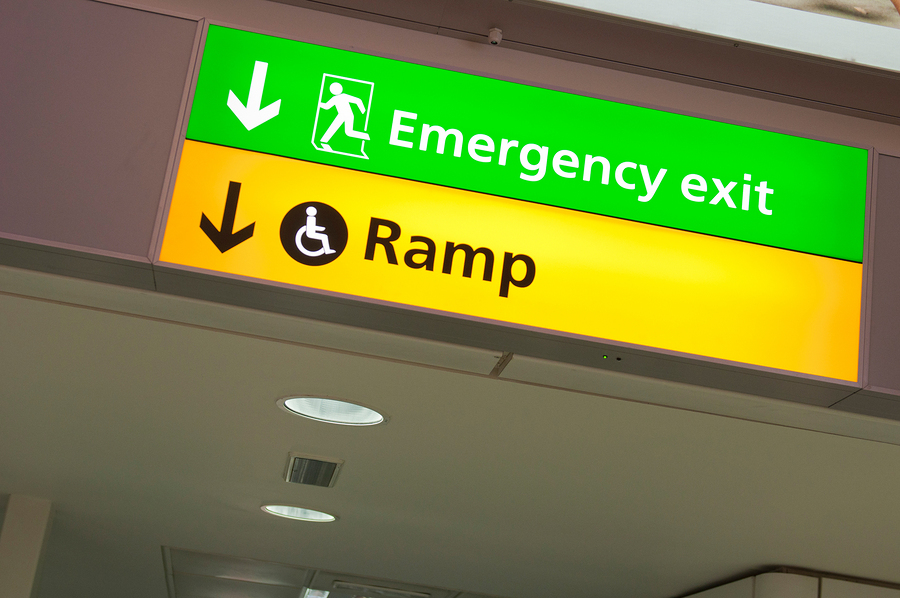Every middle market company should have a facility evacuation plan as a part of its broader continuity planning. Even just a few employees working at a remote office will need to know when it's necessary to evacuate a building and how to safely do so. Similarly, a larger facility will need a well-thought-out plan so that, should dangerous conditions arise, people will know how to shut down operations and take the best routes to safety.

If your company is large enough to come under the Occupational Safety and Health Administration's scrutiny, then you're likely required to have an emergency action plan (EAP) that includes evacuation contingencies. Even if the federal government doesn't demand one, a state or local agency might. But beyond regulations, you want people and facilities to be as safe as possible in the worst of conditions, so planning and preparation is a must. Because a middle market company doesn't have a large company's extensive resources and functional specialization, the combination of activities in a single location can make planning more complicated and demanding.
The Needs of an Evacuation Plan
An evacuation plan has to account for employees' roles, duties and expectations. Although middle market companies may not face the complexity of a global giant, they are large enough to go beyond the stage of telling people to simply run out the door.
Your exact instructions will depend on the type of emergency. A fire will demand a different response than a tornado, flood, active shooter, bomb threat or earthquake. Some events may provide more time to react, like when authorities call for an evacuation because of a developing situation. Others will demand an immediate response. An evacuation could constitute moving from work areas to safe rooms along designated alternate routes. Alternatively, there may be cases where authorities instruct people to shelter in place, meaning that they should not leave the building.
Employee Checklists
There must be multiple checklists for employees, and each one should address a group of potential events with their corresponding response. A plan will have to cover employees' specific roles and provide steps for shutting down at-risk systems, such as server rooms, or hazardous tools, such as gas burners. It should also address routes to safety in dangerous areas. There may be specific practices in some cases, such as crawling on the floor in case of smoke and testing doors for heat before opening them.
It's important to establish a specific chain of command in an emergency, along with alternate leaders should someone not be on the premises. These people will be in charge of ensuring a smooth evacuation and alerting the authorities. They should also know when to abandon a task because someone's safety is threatened. If there is a need for special equipment, such as respirators during a chemical spill, the checklist would indicate where units are and provide a brief reminder on how to use them. If you have employees with special needs or disabilities, assign other employees to assist them.
Additionally, create sections for how to handle visitors; they also must be brought to safety, but will be unfamiliar with their surroundings and unsure of where to go. At the end of each plan, include provisions to take a headcount. This will ensure that everyone has made it out safely.
Communications
Communications start long before there is a problem. In the face of danger, you cannot depend on unprepared employees reading a checklist and comprehending instructions. It's unlikely that they will follow them correctly.
Employees need training in each possible scenario and should undergo periodic practice. Every worker should have hard copies of the checklists because they won't be able to depend on computers. Each list should be specific for the employee, including where to go, what to do and to whom that person should listen. As the company grows and changes, the checklists should be regularly updated, developed and distributed. The company should undertake periodic drills to be sure that, no matter what the scenario, people act correctly.
Communications are just as important at the beginning of a crisis. Use a simple, understandable system that indicates the type of evacuation event and the appropriate checklist. This communication should be both audible and visible in case you have employees with impaired hearing or vision.
An effective evacuation plan needs extensive amounts of work and practice. Hopefully your company will never have to implement it. However, should you need to, employee safety and operational integrity more than justify the investment of time, money and attention.
What does your company's evacuation plan look like? Let us know by commenting below.
Erik Sherman is an NCMM contributor and author whose work has appeared in such publications as The Wall Street Journal, The New York Times Magazine, Newsweek, the Financial Times, Chief Executive, Inc. and Fortune. He also blogs for CBS MoneyWatch. Sherman has extensive experience in corporate communications consulting and is the author or co-author of 10 books. Follow him on Twitter.